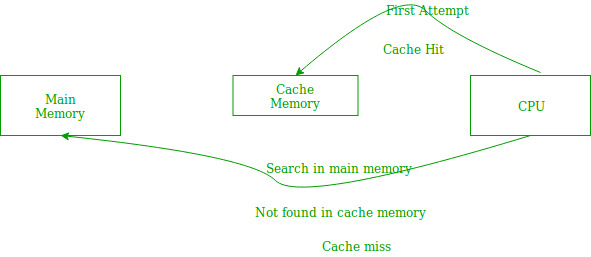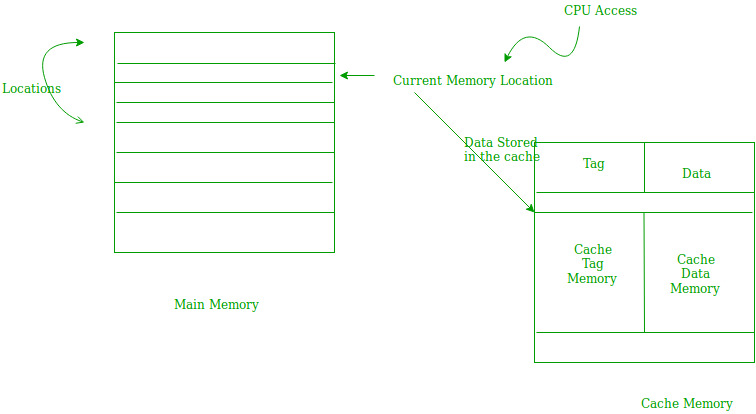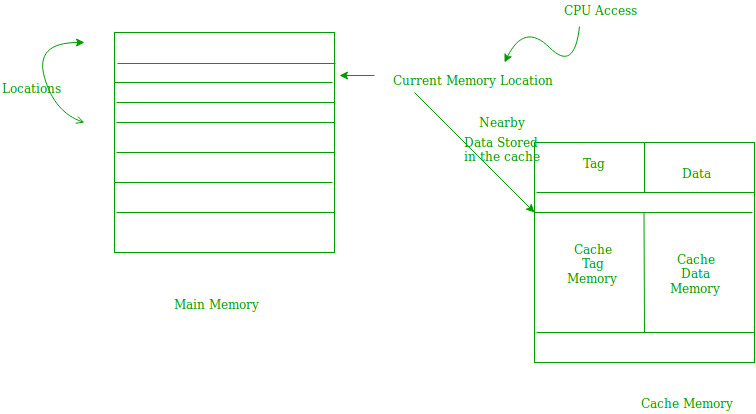1.7.2 Cache Memory - Locality of reference

- Patrick McClanahan
- San Joaquin Delta College
Locality of Reference
- Loops in program cause the CPU to repeatedly execute a set of instructions that constitute the loop.
- Subroutine calls, cause the set of instructions are fetched from memory each time the subroutine gets called.
- References to data items also get localized, meaning the same data item is referenced again and again.
Even though accessing memory is quite fast, it is possible for repeated calls for data from main memory can become a bottleneck. By using faster cache memory, it is possible to speed up the retrieval of frequently used instructions or data.

In the above figure, you can see that the CPU wants to read or fetch the data or instruction. First, it will access the cache memory as it is near to it and provides very fast access. If the required data or instruction is found, it will be fetched. This situation is known as a cache hit. But if the required data or instruction is not found in the cache memory then this situation is known as a cache miss. Now the main memory will be searched for the required data or instruction that was being searched and if found will go through one of the two ways:
- The inefficent method is to have the CPU fetch the required data or instruction from main memory and use it. When the same data or instruction is required again the CPU again has to access the main memory to retrieve it again .
- A much more efficient method is to store the data or instruction in the cache memory so that if it is needed soon again in the near future it could be fetched in a much faster manner.
Cache Operation:
This concept is based on the idea of locality of reference. There are two ways in which data or instruction are fetched from main memory then get stored in cache memory:
- Temporal Locality
Temporal locality means current data or instruction that is being fetched may be needed soon. So we should store that data or instruction in the cache memory so that we can avoid again searching in main memory for the same data. 
- When CPU accesses the current main memory location for reading required data or instruction, it also gets stored in the cache memory which is based on the fact that same data or instruction may be needed in near future. This is known as temporal locality. If some data is referenced, then there is a high probability that it will be referenced again in the near future.
- Spatial Locality
Spatial locality means instruction or data near to the current memory location that is being fetched, may be needed by the processor soon. This is different from the temporal locality in that we are making a guess that the data/instructions will be needed soon. With temporal locality we were talking about the actual memory location that was being fetched.

This page titled 1.7.2 Cache Memory - Locality of reference is shared under a CC BY-SA license and was authored, remixed, and/or curated by Patrick McClanahan.
- Back to top
- 1.7.1 Cache Memory - Multilevel Cache
- 1.8 Direct Memory Access
- Was this article helpful?
- Yes
- No





